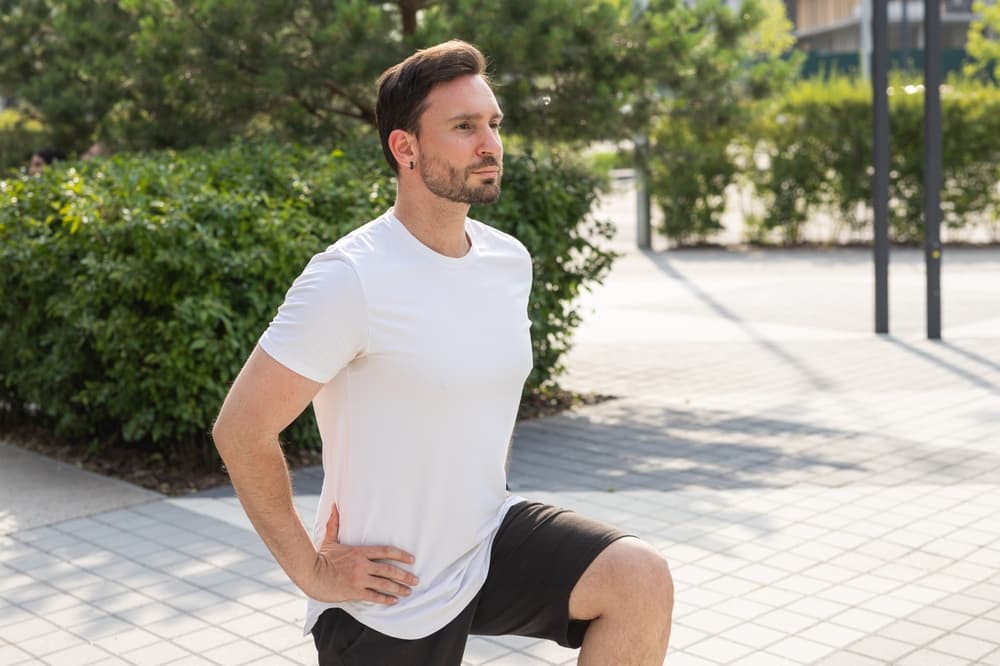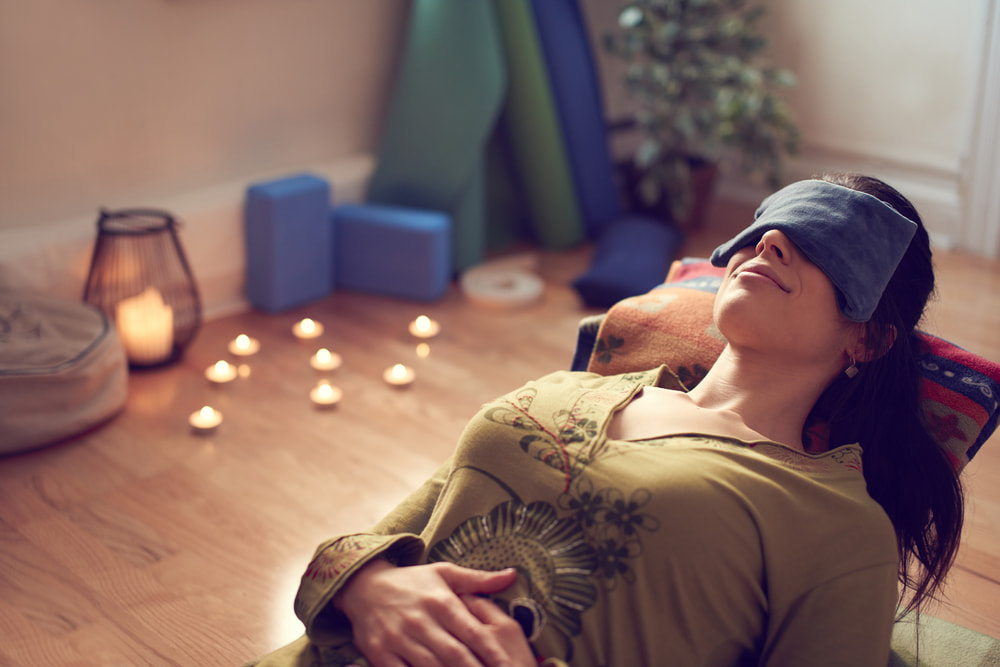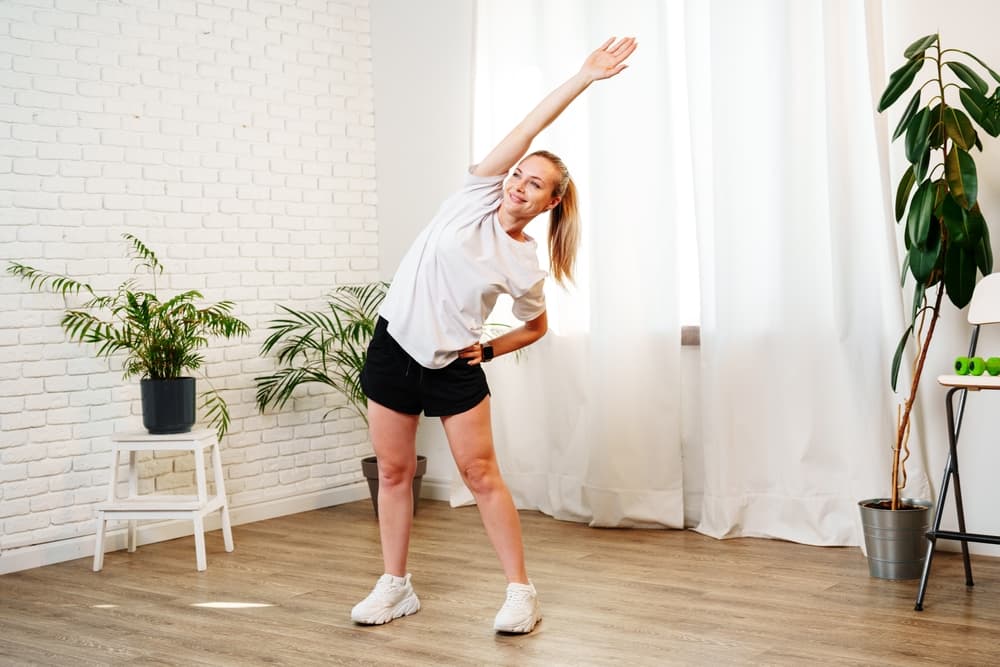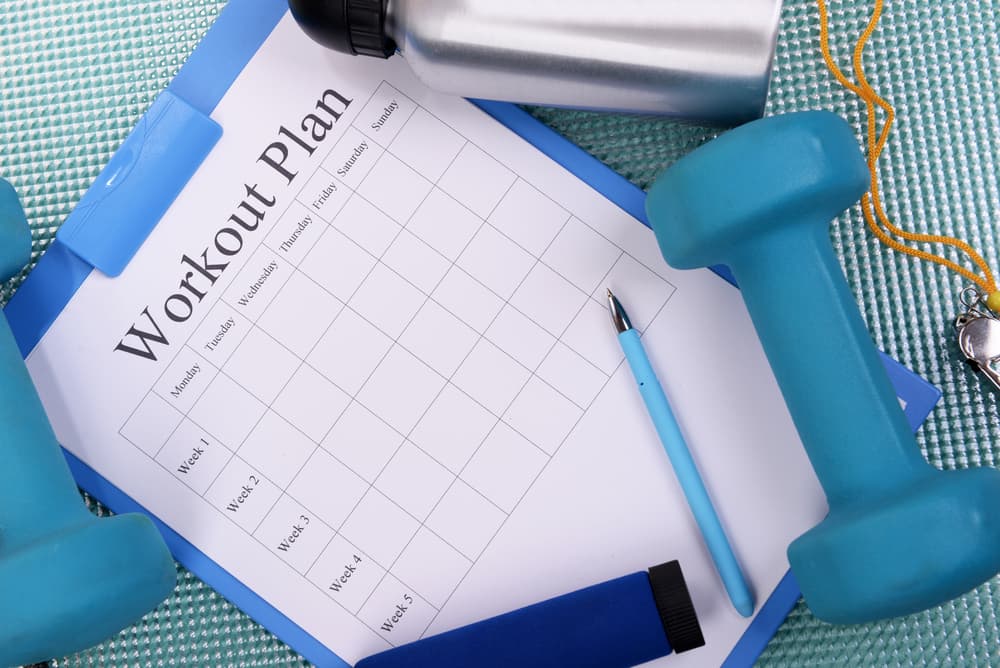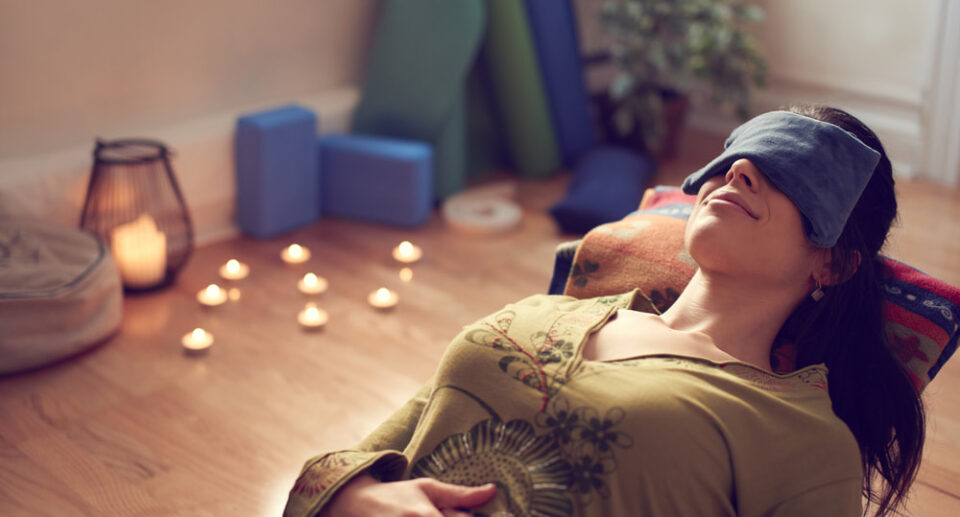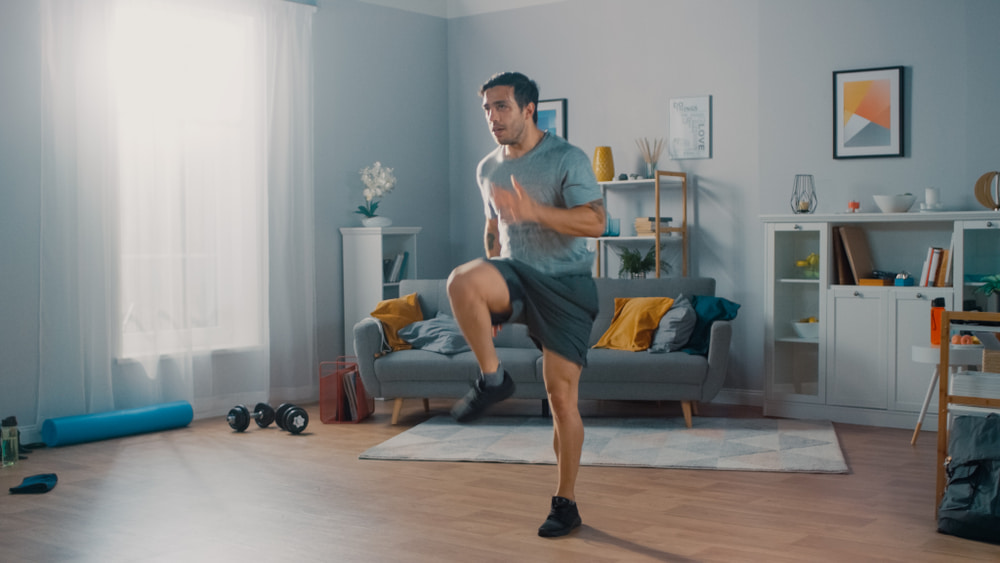How to maintain an active lifestyle without a gym
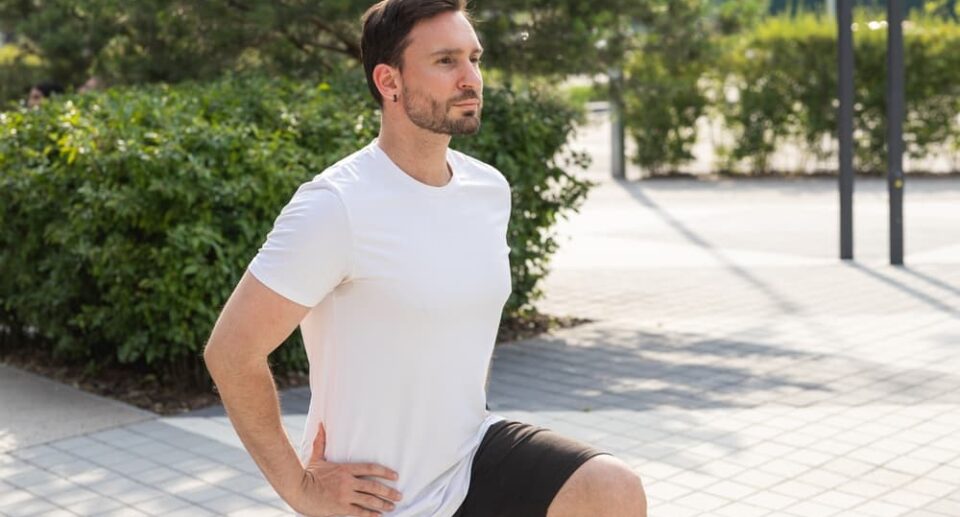

Maintain an active lifestyle without a gym everyone wants to stay fit in a busy life, but many people cannot go to the gym due to a lack of time or opportunity. The good news is that the gym is not essential to stay fit. With a bit of awareness, daily movement, proper diet, and some simple home exercises, you can easily maintain an active and healthy lifestyle. In this article, we will learn how to take care of your body and mind without the gym, and how you can become more energetic and healthy by changing your daily habits a little.
“You don’t have to be great to start, but you have to start to be great.”
Adding movement to your daily life
Keeping your body active through work
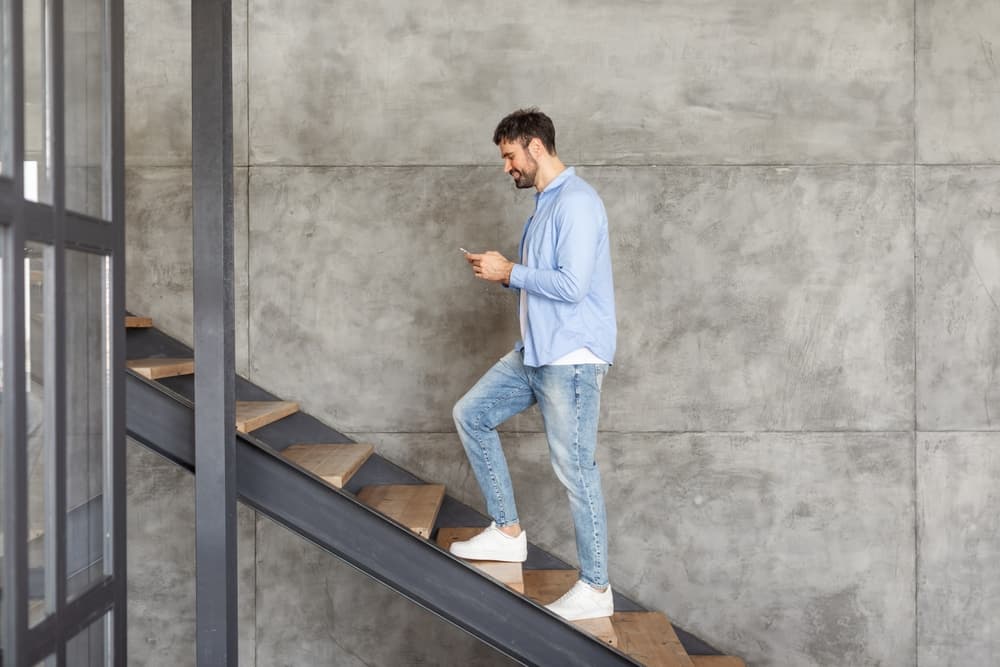

A Harvard Health Publishing guideline states that, on the other hand, exercise improves heart health, helps control blood pressure, and reduces stress.
Use daily tasks at the office or home as an opportunity to exercise:
Use the stairs: Make a habit of using the stairs instead of the elevator. This is an excellent cardiovascular exercise. If you have to climb a long distance, climb a few floors of stairs, and take the elevator the rest.
Desk workout: Don’t sit continuously. Get out of your chair and stand up for 5 minutes every 30-60 minutes, walk, or do light stretching. Do simple stretches for your neck, shoulders, and back while sitting.
Walking meetings: Walk instead of sitting during short meetings or one-on-one discussions with colleagues (if possible).
Housework: Do household chores vigorously. For example:
Quickly vacuuming/vacuuming: Mopping or vacuuming at a faster pace burns more calories.
Heavy gardening: Digging, weeding, or carrying heavy bags helps build muscle strength.
Car washing: Cleaning your car by hand is a good physical activity.
Learn More: How to transition to a more active lifestyle without a gym.
Be active in your commute
Change your daily commute routine:
Walk or cycle: If your destination is close, walk or cycle instead of using a car or public transportation.
Get off the bus or train early: Get off one or two stops before your destination and walk the rest of the way.
Increase parking distance: Park your car a little further away from the main entrance to your destination, so you have to walk a little.
Movement in leisure and entertainment
Keep your leisure time active:
Active breaks: Get up and do light stretching, planks, or sit-ups while watching TV or during commercial breaks.
Sports: Participate in an outdoor game with friends or family (such as cricket, football, badminton, or running around with the kids).
Dance: Put on your favorite song and dance for a while at home. This is a great cardio and mental boost.
Play with your pets: If you have pets, play with them in the park or take them for long walks.
Psychological tips
Mental strategies to maintain the habit:
The concept of ‘movement snacks’: Instead of thinking about a big workout, think of small movement sessions (5-10 minutes) at different times of the day as ‘movement snacks’.
Goal Setting: Set a simple step goal for each day, such as: “Today I will walk 10,000 steps” or “I will finish walking for 30 minutes before 12 noon.”
Tracking: Track how much movement you are doing using step counter apps or a smartwatch. This keeps you motivated.
Body Weight Training
Body weight training is an exercise method that uses your own body weight to strengthen muscles. That is, no gym machines, dumbbells, or heavy equipment are required. The main advantage of this exercise is that it can be done anywhere – at home, in the park, or during a break at the office. It not only increases strength but also improves endurance, balance, and core stability.
Benefits of Body Weight Training
General Weight Management: Regular body weight exercises burn calories and help in weight management.
Increase Muscle Strength: Effectively strengthen the muscles of the entire body through Push-ups, Squats, Planks, etc.
Improve Flexibility and Balance: Exercises like Lunges, Planks, and Burpees increase the body’s flexibility and balance.
No Equipment Required: Can be easily done anywhere, at home or outdoors.
Increase Total Body Functionality: Cardio, strength, and stamina are combined.
Traditional Body Weight Exercises
Push-ups: Strengthen the muscles of the chest, shoulders, and arms.
Squats: Strengthen the hips and legs, tone the muscles of the lower body.
Planks: Increase core strength and improve posture.
Lunges: Improve balance and increase muscle flexibility.
Jumping Jacks or Burpees: Helpful in cardio and calorie burning.
Some tips for bodyweight training
Set a regular schedule: Try to exercise for at least 15–30 minutes a day.
Gradual increase: Start with simple variations and gradually increase repetitions and time.
Maintain proper form: Proper exercise form is essential; it reduces injury and increases effectiveness.
Use body variation: Keep the whole body active by varying the type and duration of exercises.
Take recovery time: Give your muscles enough rest to recover.
Bodyweight training and daily life
Bodyweight exercise is not just for exercise; it is a great way to stay active in daily life. You can use the stairs, increase your walking, and even do small stretches at the office or at home. By combining these habits, you can maintain fitness without going to the gym.
It is possible to stay fit without going to the gym, as proven by bodyweight training. It strengthens the body, improves core and balance, and ensures an overall healthy lifestyle. With regular practice and the proper habits, you can easily maintain an active lifestyle, where no exercise equipment is required.
Free and outdoor activities
Mental freshness: Exposure to fresh air and sunlight provides vitamin D and reduces stress.
Change: Add new scenery and experiences to overcome the boredom of staying in the same environment at the gym.
Completely free: No membership fees or equipment required.
Walking: The easiest way to fitness
Walking is the easiest and most effective way to maintain an active lifestyle.
Brisk walking: Walking at a fast pace, so that your heart rate increases and you sweat a little. Walking briskly for 30 minutes a day burns enough calories.
Interval walking: Walking at a fast pace for some time and at a slow pace for some time (for example: 1 minute fast, 2 minutes slow). This helps increase metabolism.
Walking in nature: Create a walking route in a park, forest, or lake nearby.
Hiking: If possible, hike a nearby hill or mountain trail. It strengthens lower body muscles and increases stamina.
Running and Jogging
Jogging is a great cardiovascular exercise.
Easy to start: Beginners can start with a mix of walking and jogging (the ‘Walk-Run-Walk’ method).
Routine: Create a specific routine, such as running 3-4 days a week in the morning or evening.
Proper shoes: Encourage the use of appropriate and comfortable shoes for running to avoid injuries.
Cycling
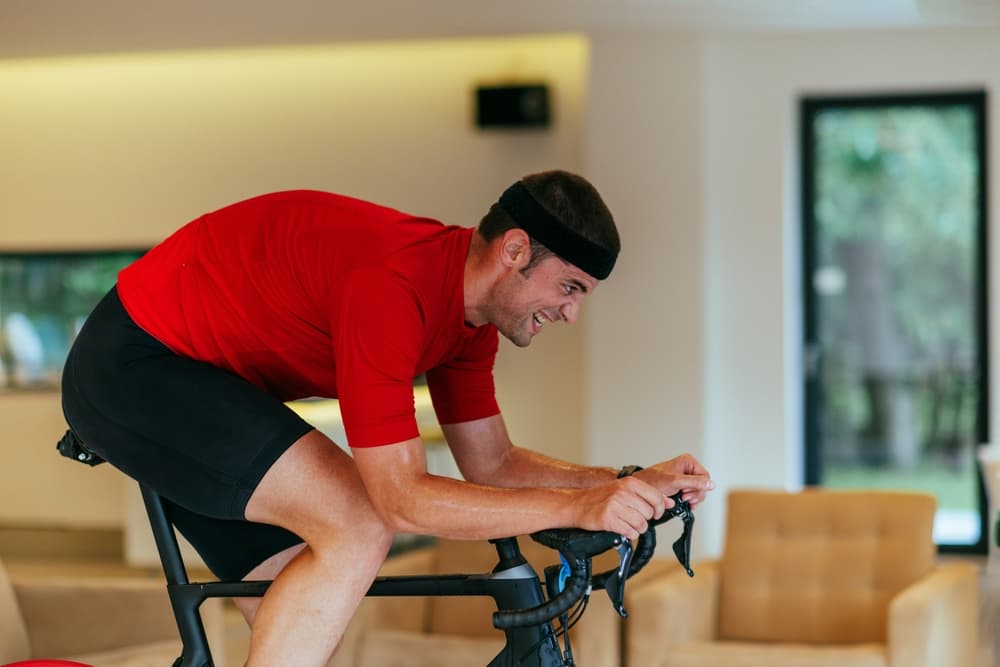

Cycling is a great low-impact cardio that puts less stress on the knees.
Pleasure Ride: Go on a long bike ride with friends or family on vacation.
Daily Use: Use your bike to go shopping or meet up with friends.
Exercise in Public Spaces
Use equipment in parks, fields, or open spaces:
Park Benches: Park benches can be used for step-ups, tricep dips, or box jumps.
Yoga, Stretching, and Tai Chi
These activities are great for keeping your mind and body calm and assertive.
Backyard or Rooftop: Do a yoga or stretching session in your backyard, porch, or rooftop in the morning or evening.
Online Resources: There are countless free yoga or stretching tutorials available on YouTube.
Benefits: Regular yoga increases flexibility, improves balance, and calms the mind.
Mental Health and Motivation
Create a Routine and Set Small Goals
A powerful strategy for staying motivated:
Create a specific routine: Decide in advance how many days a week and what time of day you will be active. For example: “I will walk briskly for 20 minutes at 7 am.”
Small and realistic goals: Don’t set a huge goal on the first day. Set small goals (for example: walk 20 minutes every day for the first week). Meeting these small goals will motivate you to move towards the big goal.
SMART goals: Make sure your goals are Specific, Measurable, Achievable, Relevant, and Time-bound.
Make fitness fun
Think of exercise as a source of pleasure rather than a chore:
Music or podcasts: Listen to your favorite music or podcasts while walking, jogging, or exercising at home. This makes it easier to pass the time and keeps you focused.
Make dancing a workout: Instead of following a formal exercise routine, dance to your favorite songs for a while. It’s great cardio.
Getting active with friends or family: Spend time playing outdoor games or walking with friends or family members. It keeps you motivated.
Workout tracking and rewards
Measuring progress and rewarding yourself keeps you motivated:
Using apps: Track your daily steps, distance, and calories burned using a step counter or fitness tracking app (e.g., Google Fit, Strava). Seeing your progress will encourage you to be more active.
Celebrating progress: When you achieve a small goal (e.g., hitting your daily goal for a month in a row), give yourself a healthy reward (e.g., a favorite fruit or a new sports T-shirt).
Journaling: Write down your daily feelings or workouts in a journal. This will help you understand your physical improvements as well as your mental changes.
Stress management and healthy habits
Highlight how physical activity helps improve your mental health:
Stress reliever: Exercise is a natural stress reliever. Physical activity releases endorphins, the “feel-good” hormone, which makes you feel calm and happy.
Mindfulness: Pay attention to your breathing, the natural surroundings, and how your body feels while walking or stretching. This helps to increase mindfulness.
Adequate sleep: An active lifestyle is conducive to better sleep. It is the foundation of mental health. Discuss how regular exercise can improve sleep quality.
Diet and hydration
The importance of a balanced diet
A healthy diet supports your active lifestyle and helps you get faster results:
The role of protein: Protein is essential for muscle repair and growth. Add eggs, lentils, fish, chicken, and dairy products to your diet. This will help with muscle recovery after bodyweight training.
Complex carbohydrates: Consume complex carbohydrates (such as oats, brown rice, and whole-grain bread) to maintain energy throughout the day. It provides the long-lasting energy needed for outdoor activities (walking, cycling).
Healthy fats: Consume healthy fats (such as avocado, nuts, seeds, and olive oil) in small amounts for hormonal balance and overall health.
Fruits and vegetables: Eat plenty of fruits and vegetables. They are full of vitamins, minerals, and antioxidants, which boost immunity and help the body recover faster.
Avoid processed foods: Avoid processed foods and fast foods that are high in sugar, salt, and unhealthy fats as much as possible.
Hydration
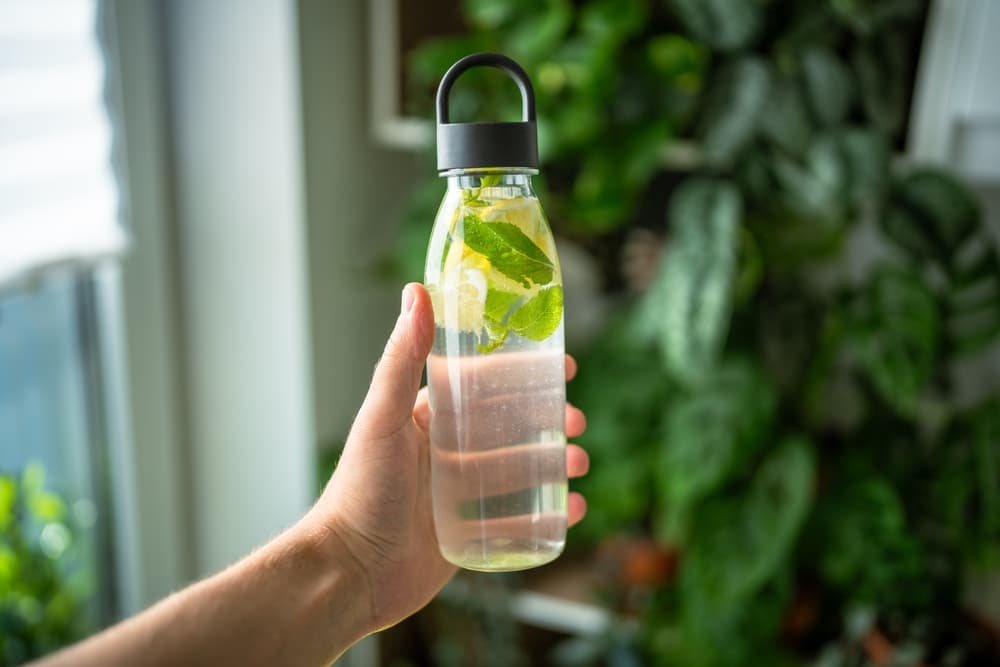

Ensuring adequate hydration is fundamental to maintaining physical function:
Water is best: Drink at least 8-10 glasses or more of water a day. It keeps your metabolism going and helps you fight fatigue.
Before and after exercise: It is essential to drink water before and after exercise to keep your body hydrated.
Drink alternatives: Instead of sugary soft drinks or packaged juices, use water, lemonade, or coconut water as a source of hydration.
FAQ
Q: Can I stay fit without going to a gym?
A: Yes! By incorporating daily movement, bodyweight exercises, and healthy eating habits, you can maintain an active and healthy lifestyle at home or outdoors.
Q: What are some effective home workouts without gym equipment?
A: Effective workouts include push-ups, squats, lunges, planks, jumping jacks, and burpees. These exercises strengthen muscles, improve endurance, and boost overall fitness.
A few words CoreWellfit
Suppose we prioritize small habits in our daily lives. With regular walks, body weight exercises, proper diet, and adequate rest, you can stay fit, healthy, and energetic without going to the gym. The key is to maintain consistency and motivate yourself. Remember, fitness is not just about equipment or tools. Activity, awareness, and small steps ensure a healthy life in the long run.
Joseph Andrew is a health and fitness writer at CoreWellFit, dedicated to making fitness simple, effective, and accessible for everyone. He specializes in home workout strategies, strength training, and wellness guidance, with a focus on practical tips that fit into busy lifestyles. Joseph also reviews fitness products and training gear, helping readers make informed choices that support their goals.

